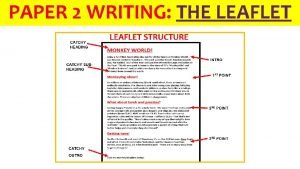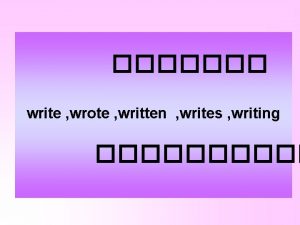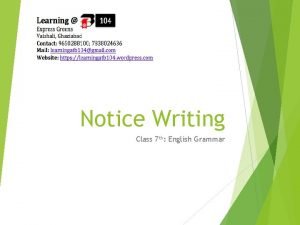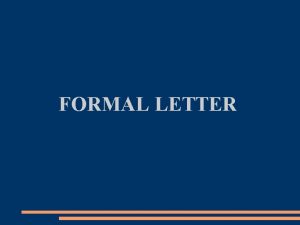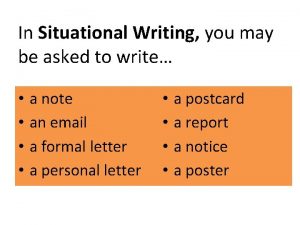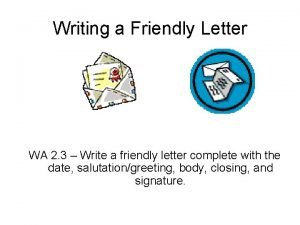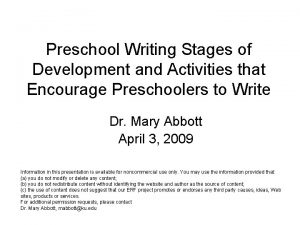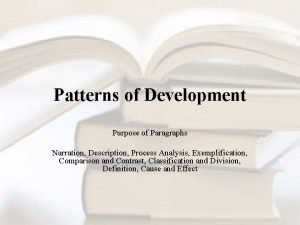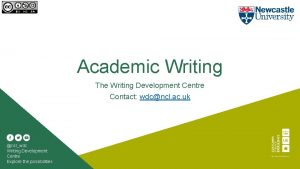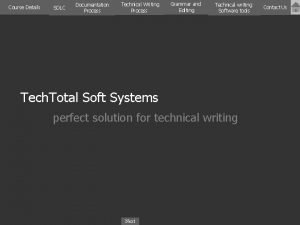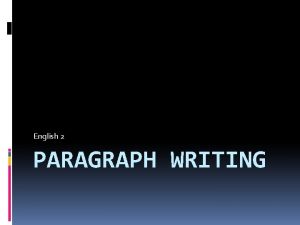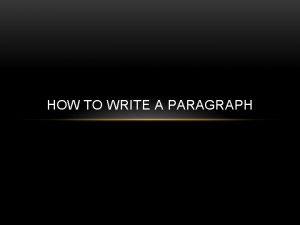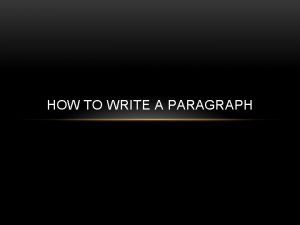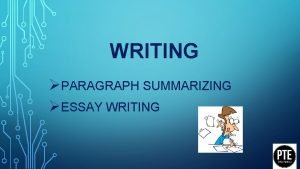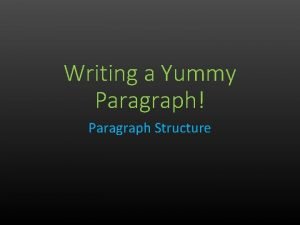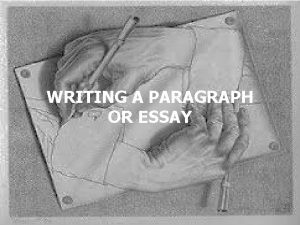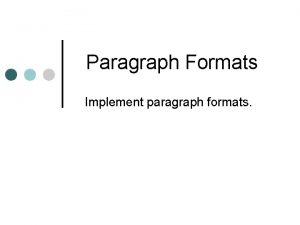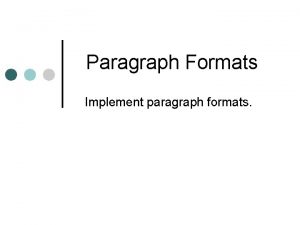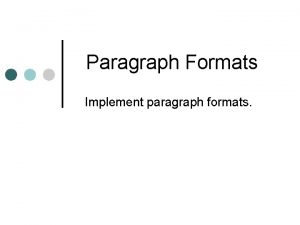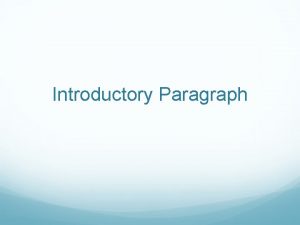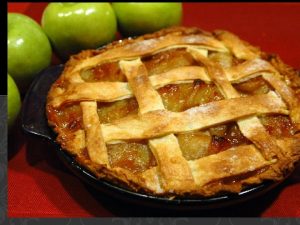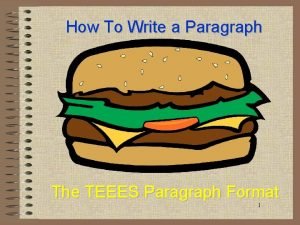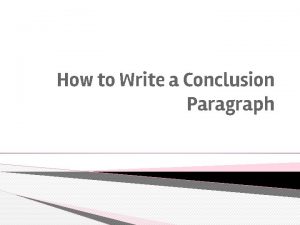WRITING PARAGRAPH DEVELOPMENT How to write a paragraph


















- Slides: 18

WRITING: PARAGRAPH DEVELOPMENT

How to write a paragraph? Prewriting Stage: 1. Think What are you going to write about? - Ask yourself: What question am I going to answer in this paragraph or essay? - What is the most important part of my answer? - What facts or ideas can I use to support my introductory sentence? - How can I make this paragraph or essay interesting? - Where can I find more facts on this topic? Source: Gupta, A. and Sawhney. (2005), Modern Essays

How to write a paragraph? Prewriting Stage: 2. Take some notes: - Write enough to help you remember why and how you are going to write your paragraph or essay. 3. Collect Facts or Examples: - Examples and facts should be related to the exact question you are going to answer in your paragraph or essay. Source: Gupta, A. and Sawhney. (2005), Modern Essays

How to write a paragraph? Prewriting Stage: 4. Find the Main Idea: - What is the main point of your paragraph? 5. Organize Facts and Ideas Related to Your Main Idea: - You have to support your main idea by using some facts and examples. - Find suitable facts and examples. Source: Gupta, A. and Sawhney. (2005), Modern Essays

Parts of a Paragraph Topic Sentences: - First sentence in a paragraph - Main idea of the paragraph - First impression: You have to grab the attention of the reader. «This paragraph will be about…» is this sentence grabbing your attention?

Parts of a Paragraph Supporting Details: - Give details to develop and support the main idea of the paragraph. The weather in 1816 Europe was abnormally wet, keeping many inhabitants indoors that summer. From April until September of that year, "it rained in Switzerland on 130 out of the 183 days from April to September" (Phillips, 2006). Unlike today, one could not simply turn on a television or click through the Internet in order to entertain oneself. Instead, it was much more common for the educated people of the day to spend time reading, discussing well-known authors and artists of the day, playing at cards and walking in their gardens and walking paths. Source: https: //slulibrary. saintleo. edu/c. php? g=368032&p=2488977

Parts of a Paragraph Supporting Details: It rained a lot in 1816. . a lot - like everyday; the weather in Europe was abnormally wet because it rained in Switzerland on 130 out of the 183 days from April to September. If I was Mary Shelley I might decide to write a book too. Afterall, it was the onnly thing you could do without TV or anything. She said that she "passed the summer of 1816 in the environs of Geneva. . . we occasionally amused ourselves with some German stories of ghosts. . . These tales excited in us a playful desire of imitation" So, people were stuck inside and bored. Mary Shelley decided to write a book becuase it was so awful outside. I can totally see her point, you know? I guess I would write a novel if there was nothing else to do. Source: https: //slulibrary. saintleo. edu/c. php? g=368032&p=2488977

Parts of a Paragraph Closing Sentence / Transition Sentence: - The last sentence in a paragraph - Restates the main idea of your paragraph - Conclude by linking the last paragraph to the first, perhaps by reiterating a word or phrase you used at the beginning. - Conclude with a sentence composed mainly of one-syllable words. - Conclude with a sentence that's compound or parallel in structure; such sentences can establish a sense of balance or order that may feel just right at the end of a complex discussion. Source: https: //writingcenter. fas. harvard. edu/pages/ending-essay-conclusions

Every Paragraph Should be; - Unified: All of the sentences in a single paragraph single controlling idea - Coherent: The sentences should be arranged in a logical manner and should follow a definite plan for development. - Well-developed: Every idea discussed in the paragraph should be adequately explained and supported through evidence and details that work together to explain the paragraph’s main idea. Source: https: //libguides. usc. edu/writingguide/paragraph

Some Models for Writing Paragraph: A. Cause and Effect B. Comparison and Contrast C. Listing of Details D. Definition

Cause and effect : An Example There needs to be a correct relationship between humans and the earth which is our environment, that is to say. . . the land all its resources. This is because humans depend upon the earth's resources for survival. Therefore, if a lance is not maintained between our use of the earth and our desire for progress (which has tended to over-use resources to the point of destruction), the inevitable result could be the destruction of the land the people upon it. Thus, due to the dependency of humans upon their natural environment, the destruction of ourselves will follow the destruction of our environment. Source: Cox, K. (2004). English for Academic Purposes. Australia: Pearson, Cambridge Press.

Comparison and Contrast: An Example Writing stories or writing a book is like composing songs. The writer has to have an initial idea, as does a songwriter. They both have to find an audience. The writer needs a, publisher and a distributor for their stories or books and a songwriter needs a recording producer and a distributor for their music. They differ in that a writer rarely reads their work aloud but a songwriter expects their song to be performed aloud (sung). Source: Cox, K. (2004). English for Academic Purposes. Australia: Pearson, Cambridge Press.

To show addition: Again And Also Besides Equally important Furthermore In addition In the first place Moreover Next Too To give examples: For example For instance In fact Specifically That is To illustrate Consequence All in all In conclusion In other words In short In summary On the whole That is Therefore To sum up

Contrast: Conversly While However In contrast Wheras Instead On the contrary But Comparison Similarly Likewise Correspondingly Equally In the same manner As Condition If Unless Provided that For So that Depending on

Listing of Details: An Example Tofu is an excellent food source which is light on the stomach, full of protein, versatile to prepare, and derived from soybeans, a sustainable crop. It costs less than meat-based protein That's why it is used in so many countries as an important and healthy food. Source: Cox, K. (2004). English for Academic Purposes. Australia: Pearson, Cambridge Press.

Some common problems in student writing: - Too many ideas are introduced in one paragraph; - Sentences are not related closely enough to each other.

LISTENING EXERCISE Youtube Video: «Life Lessons and College Adventures in College Essay Writing» Mark Hernandez Source: https: //www. youtube. com/watch? v=0 p. O 0 F 5 w. AGBs

WRITING EXERCISE: Creative Writing Please write an “creative essay” by using the information we discussed about paragraph development. (You are free to choose any subject- It should be at least 1000 words).
 Cache memory adalah
Cache memory adalah How to write leaflet writing
How to write leaflet writing Write, wrote, written
Write, wrote, written I am writing email
I am writing email Class 7 notice
Class 7 notice Letter format example
Letter format example Situational writing formal letter
Situational writing formal letter How to write letter writing
How to write letter writing Write wrote written writing
Write wrote written writing History of community development in pakistan
History of community development in pakistan Development that ended much development crossword
Development that ended much development crossword What are the three methods of pattern development
What are the three methods of pattern development Phases of writing development
Phases of writing development Similarities to other patterns of written text narration
Similarities to other patterns of written text narration Example of pattern of development definition
Example of pattern of development definition Writing development centre newcastle
Writing development centre newcastle Writing development centre newcastle
Writing development centre newcastle Sdlc technical writing
Sdlc technical writing Patterns of development in writing across disciplines
Patterns of development in writing across disciplines

